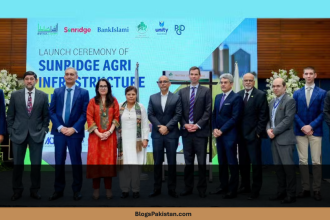Introduction: Paving the Way for Progress
Punjab, Pakistan’s economic heartbeat, is gearing up for a infrastructure metamorphosis. In a landmark move, the Provincial Development Working Party (PDWP) has approved nine major road projects worth Rs. 13.67 billion, signaling a bold leap toward modernizing transportation networks. From bustling Lahore to historic Sahiwal, these initiatives promise to bridge rural-urban divides, boost trade, and redefine mobility. Let’s unpack how Punjab is laying the asphalt for a brighter future.
The Big Picture: Punjab’s Roadmap to Prosperity
Chaired by Planning and Development Board Chairman Barrister Nabeel Awan, the PDWP meeting underscored infrastructure as a catalyst for growth. The approved projects span 11 districts, targeting congested corridors, dilapidated rural routes, and critical trade pathways. Key goals include:
- Reducing travel time for commuters and goods transporters.
- Enhancing safety through modernized road designs.
- Stimulating regional economies by linking agrarian hubs to urban markets.
With over 250 kilometers of roads slated for upgrades, Punjab is betting big on connectivity as a driver of development.
Breaking Down the Nine Approved Projects
Here’s a district-by-district look at where Punjab’s billions are flowing:
1. Lahore-Jaranwala Road Dualization (Nankana Sahib)
- Cost: Rs. 1.163 billion
- Scope: Dualizing 14.61 km from Mandi Faizabad to Mangranwala.
- Impact: Ease traffic on a key route connecting Lahore’s industrial zones to rural Punjab.
2. Sahiwal-Arifwala Road Rehabilitation (Sahiwal)
- Cost: Rs. 1.09 billion
- Scope: Revamping 26 km from Sahiwal to Harappa Bypass via Malan Shah Chowk.
- Impact: Boost tourism access to Harappa’s ancient archaeological sites.
3. Farooqabad to Safdarabad Road (Sheikhupura)
- Cost: Rs. 1.512 billion
- Scope: Restoring 23.75 km of a critical agrarian transport link.
- Impact: Faster access for farmers transporting wheat and rice to mills.
4. Safdarabad-Manawala Road (Sheikhupura)
- Cost: Rs. 1.18 billion
- Scope: Upgrading 19.5 km of a high-traffic rural artery.
- Impact: Reduce accidents on a route plagued by potholes and narrow lanes.
5. Chiniot District Boundary to Tahli Adda (Sargodha)
- Cost: Rs. 1.94 billion
- Scope: Constructing 34 km through Sial Mor, Midh Ranjha, and Hilalpur.
- Impact: Connect remote villages to Sargodha’s education and healthcare hubs.
6. Sahiwal-Shahpur Road Widening (Sargodha)
- Cost: Rs. 1.9 billion
- Scope: Expanding 34.4 km of a vital inter-district trade route.
- Impact: Strengthen supply chains for Sargodha’s citrus and mango exports.
7. Sangla Hill–Safdarabad Road Restoration (Nankana Sahib)
- Cost: Rs. 1.22 billion
- Scope: Rehabilitating 14.05 km of a flood-damaged roadway.
- Impact: Improve resilience against monsoon disruptions.
8. Tandlianwala to Kamalia Route (Faisalabad)
- Cost: Rs. 1.82 billion
- Scope: Overhauling 59 km via Zaffar Chowk and Mamukanjan.
- Impact: Streamline access to Faisalabad’s textile factories for rural laborers.
9. Taxila to HMC Farooqia Dualization (Rawalpindi)
- Cost: Rs. 1.86 billion
- Scope: Dualizing 10.8 km near Taxila’s UNESCO World Heritage sites.
- Impact: Alleviate congestion in a region attracting history buffs and pilgrims.
Why These Roads Matter: Beyond Asphalt and Concrete
Punjab’s road overhaul isn’t just about smoother commutes—it’s a socioeconomic game-changer.
Economic Ripple Effects
- Job Creation: Over 15,000 temporary jobs in construction and engineering.
- Agri-Boost: Reduced post-harvest losses with faster crop transport.
- Tourism Surge: Better roads to heritage sites like Harappa and Taxila.
Social Impact
- Healthcare Access: Villages in Sargodha and Chiniot gain quicker routes to hospitals.
- Education Equity: Students in remote areas can reach colleges reliably.
Challenges on the Horizon
While optimism runs high, hurdles remain:
1. Land Acquisition Delays
Farmers in Sheikhupura and Sahiwal have raised concerns about fair compensation for land used in road expansions.
2. Environmental Costs
Activists warn against deforestation and habitat disruption in ecologically sensitive zones like Nankana Sahib.
3. Maintenance Accountability
“Who will repair these roads after five years?” asks a Faisalabad-based logistics manager. Sustained funding is critical.
Punjab’s Infrastructure Vision: What’s Next?
The PDWP’s approvals are just the start. Sources reveal longer-term plans:
- Smart Highways: Integrating IoT sensors for real-time traffic management.
- Public-Private Partnerships (PPPs): Inviting foreign investors for future megaprojects.
- Green Roads: Using recycled materials and solar-powered streetlights.
A Blueprint for Other Provinces
Punjab’s strategy offers lessons for Sindh, KPK, and Balochistan:
- Prioritize High-Impact Corridors: Focus on roads that unlock economic potential.
- Community Engagement: Address landowner concerns proactively.
- Transparent Spending: Publish real-time project updates to curb corruption.
Conclusion: Driving Punjab Toward a Connected Future
As bulldozers rev up across the province, Punjab is scripting a roadmap to progress—one kilometer at a time. These projects symbolize more than infrastructure; they’re a promise of equitable growth, opportunity, and resilience. For other regions, the message is clear: Invest in roads, and you invest in people.










